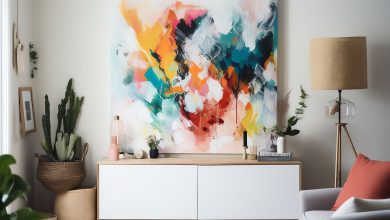How To Organize Art: What to Consider?

For decades an artist is known as the most jumble and chaotic person. Being messy was the old identity of an artist. Now, this myth has been changed!You might have heard about the rich history of art in Singapore. Creators here are so obsessed with ancient culture; that is why art is based on them. Here we will discuss organizing your art at an art gallery in Singapore. But for managing, you need to stay informed and updated about your art piece collection.
In this write-up, we enlisted the most important points for organizing your art. It will help you to appear professional and organized.
Why Is It Important To Organize Your Artwork?
You can take care of all your collection by organizing an art. Here the good news is that you don’t need to keep a record by hand. You can use various digital art organizing apps such as Google sheet or Microsoft worksheet for keeping collections details safe. Working on these apps demands entering a few details. Further, the data will be saved automatically.
Now, before starting artwork management, let’s take a glance at six important things you must know about organizing your collection.
Important Tips To Organize Art
1. Name of the Artist
To organize every art, we suggest you keep a record of the artist’s name. It might appear tough to know the name of every creator. But you can write the creator’s name at the backside or down in a painting. There are chances that memory may fade away as the collection of your art grows. So categorize work with the names of artists or creators.
2. Record of Date
When an artist creates a new work, pen down the creation date. If you don’t remember the exact creation date, write the time or month you acquired it.
The small detail will be valuable for reselling the art. The month or date of art will be relevant to the economic value of the artwork for sale. The second thing that is important to know is the time or date of every piece in the body or your collection work. Further, it will help you in keeping a track record of collections and creations in your gallery.
If you follow the above procedure, you will be able to operate business easily and smoothly.
3. Keep a Track Record of Your Work
So do you fill in all important dates and names? Now what to do with the stuff? Wait and watch; it will be an important factor to take you to the next level. Once you feed the details into an application, you will never lose it.
Try to input all information such as:
- Artist details
- Creation date
- Location of creation
- Artwork details
- Expenses
- Sales, and much more.
It will help you generate reports and track progress or downfall in business. In fact, if your customers want to buy a painting in Singapore, they don’t need to visit personally. Instead, they may check their details online.
4. Categorize According to Title
The artists spend hours, days, or months creating a single piece. So, they give a title to their art for perceiving it easily. The creators intentionally give titles to their work, so you need to do the same. It provides buyers with a hint about what the artist wants to say. Therefore you can categorize different artwork according to the title.
At last, it’s totally up to you whether to choose numbers, use words, and refer to art with a “title,” it’s really important to create a category. It will help a painting or art piece to communicate through the label.
5. Location Record
So, till now, you might have got all task updates on painting or other artworks. Now, you have to record the location of each piece. It means to fill up the location where you are keeping all your art.
Whether you are a collector or an artist, start making a memory note of each art piece present in your office, home, or studio. It is essential to know the location of artwork stored in your place. At last, you will get an entire record of all the art pieces in a collection. Also, you can locate them with ease.
6. Attach Photos
Selling work means you are selling your brand too. So, to organize everything appropriately for creating a good digital image. Take pictures of every painting you create or purchase. Your online tracking record will be complete after attaching images with product details.
Also, photos allow people to make views about collections and enjoy a view of the gallery online. On the other hand, if you attach good photographs, it will increase the chances of a sale. Furthermore, it will make your online art gallery professional and authentic.
7. Authentication Certificate
We know every piece of work doesn’t come with an authentication certificate. So, try to ask the creators for originality proof. It includes certification or a written document with the artist’s signature. You might be aware that authenticity proof affects the value or price of an artwork. Selling authentic products increases the price of a painting or an artwork.
Also, record the important information about the creator and their creation. It consists of an edition number or series number. It will help if you click a picture of these numbers or record them digitally.
Moreover, we suggest you save physical copies with digital records too. It will be proof in your hand in the form of hard copies.
Final Words
Have you decided to organize your art gallery in Singapore? Whether it’s online or in an art gallery, it will surely enhance your brand name. If you are organizing art online, there are numerous free apps (such as Google spreadsheet or Microsoft worksheet) to fill in details. But if you are organizing an offline gallery, you can still save the information digitally instead of files.
Organizing work may seem challenging, but reward you with many benefits. Well, we are sure that the above-listed tips will help your studio or art gallery propel.
Don’t hesitate to ask us queries. We are open to providing solutions!



